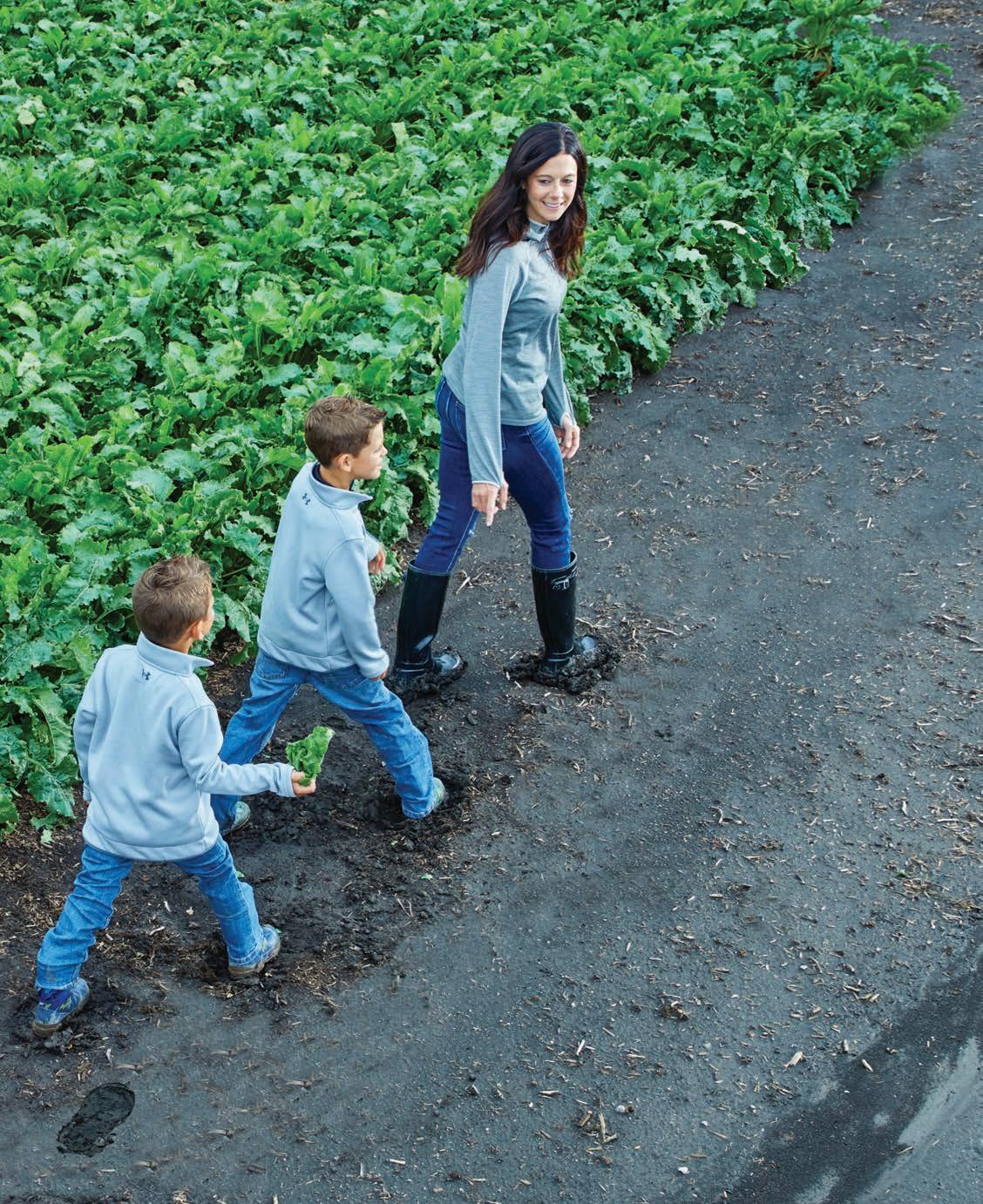Experiencing the sugarcane side of the sugar industry
pg. 16
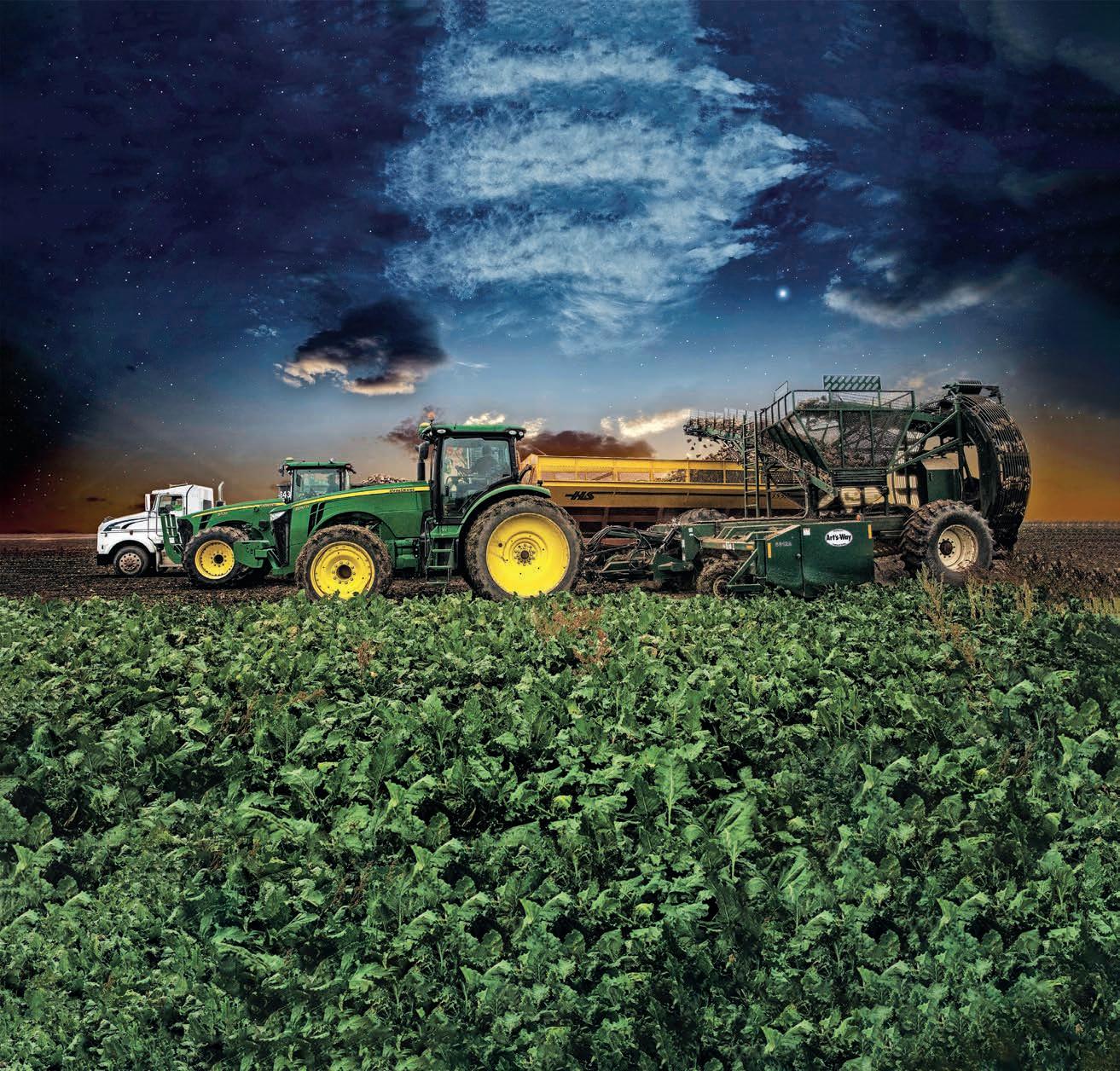
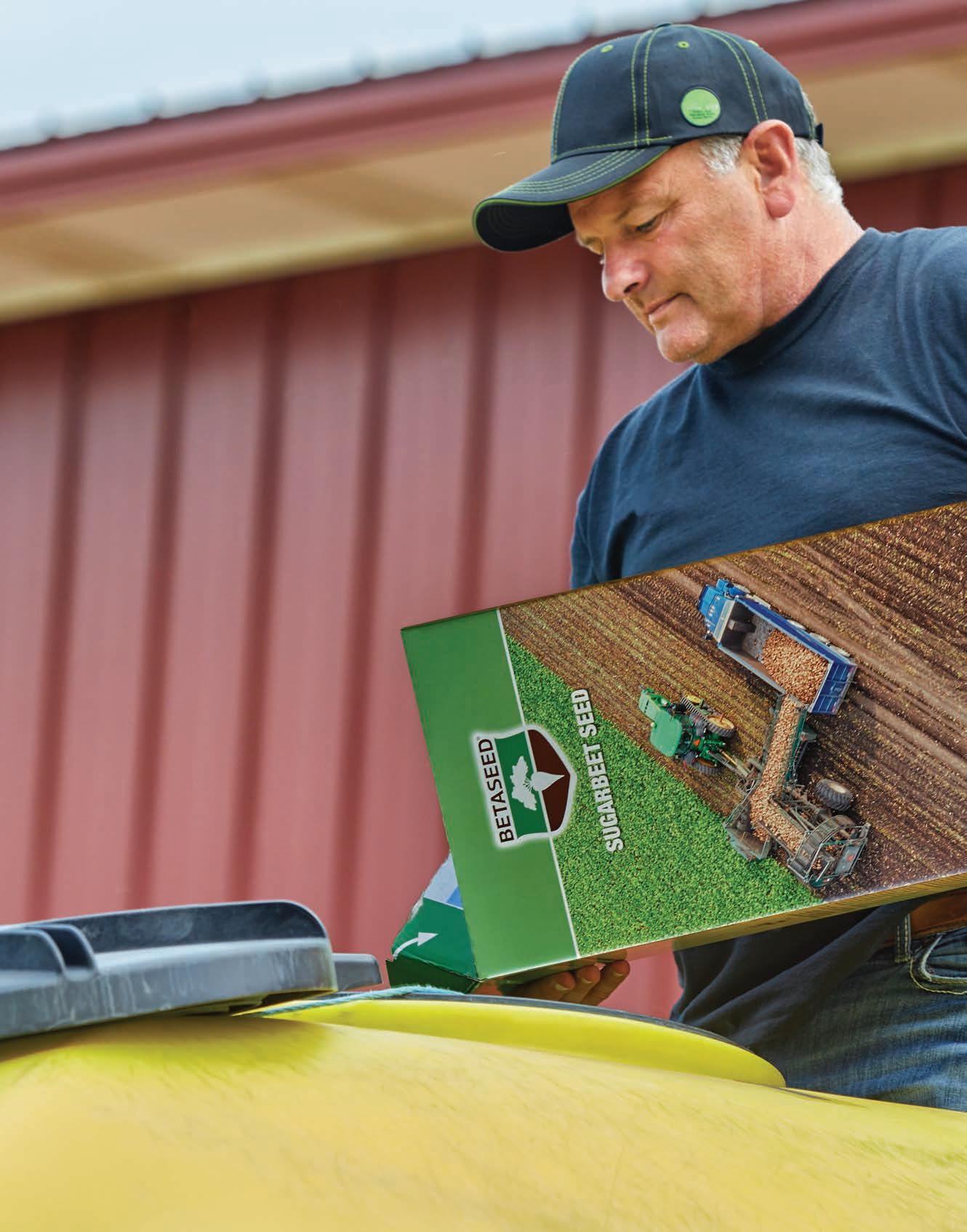

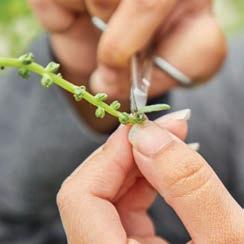

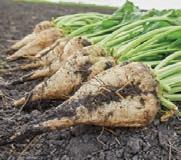
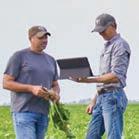


Experiencing the sugarcane side of the sugar industry
pg. 16








6 FARM BILL BEGINS
ASGA GEARS UP TO EDUCATE CONGRESSIONAL NEWCOMERS ON SUGAR POLICY
BY JENNY SCHLECHT8
Serving The Nation’s Sugarbeet Community Since 1963
AS SUGAR CONSUMPTION DROPS, OPPORTUNITY EXISTS FOR MARKETING “REAL SUGAR”
BY JENNY SCHLECHTSUGAR ASSOCIATION INFLUENCER TOUR TRAVELS TO SUGARCANE COUNTRY
BY LAURA RUTHERFORD4 Dateline Washington
20 Photos from the Field
22 Write Field ON THE
Justin and Anita Karst own Karst Farms, established in 1967 in Fairview, Montana. Their daughter, Amy Balcer, took this photo of their harvest, and since posting on social media and business pages has had interest from local farmers looking for her to take photos during the 2022 beet harvest. The photo was a present to her father, who recently lost a good friend in an accident. Amy printed the photo on canvas for her parents’ Christmas present. See more of her work at https://www.amychristinephotos.com and https://www.instagram.com/amy.christine.portraiture.
Contributed / Amy Balcer
PUBLISHER KATIE PINKE 701-261-9494 KPINKE@AGWEEK.COM
EDITOR JENNY SCHLECHT 701-595-0425 JSCHLECHT@AGWEEK.COM
LAYOUT DESIGN SARA SLABY FCCSPECIALSECTIONS @FORUMCOMM.COM
ADVERTISING ADS@AGWEEK.COM
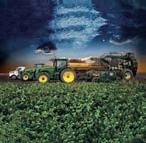
SUBSCRIBER INFORMATION MEMBERSERVICES @SUGARBEETGROWER.COM 1-800-274-5445

Volume 61 Number 1 February 2022 Sugar Publications | Agweek 101 5th Street N | Fargo, ND 58102 The Sugarbeet Grower is published by Agweek, a division of Forum Communications.
North American sugarbeet producers receive the magazine on a complimentary basis. Annual subscription rates are $12.00 domestic and $30.00 for foreign subscribers.

Advertising in The Sugarbeet Grower does not necessarily imply endorsement of a particular product or service by the publisher.
VISIT US ONLINE! Agweek.com/Sugarbeet
The continuation of the rapid spread of the coronavirus and its variants has had a major impact on the mental health of adults and children and how the country and the economy operate. The virus, combined with the Jan. 6, 2021, attack on the Capitol, has altered how we as an industry work and interact with our federal leaders. Over the Christmas holiday, I took time to study the phenomenon we are currently living through to better understand it and navigate our people and industry through it. What I found was fascinating and if you are interested, read the book “Life is in the Transitions…Mastering Change at Any Age” by Bruce Feiler.
There are 52 different disruptors (conflict, upheaval, stress) that people face. Some are voluntary and some are involuntary. Some come at our time of choosing (graduation, marriage, children, employment) and others come when we least expect them (accidents, health, deaths, economic losses, etc.). Some disruptors are easy to manage, and others are devastating that take years to work through. The average person will experience about three dozen significant disruptors in their adult life which means we spend about half of our lives responding to them and in some sort of state of transition.
Our politics are seemingly a continuous stream of disruptions. Fringe members in both parties prize disruption over legislating. Washington swings from left to right, with less and less being

completed in the middle. Congressional redistricting will bring new disruptions and impact the 2022 election cycle. We’ve seen members retiring out of age, frustration, fatigue, personal and family security, or the brutality of a long and difficult election. The upcoming election will bring new faces to Congress that must be educated ahead of the 2023 farm bill. There is much work to be done.
Within ASGA there are disruptions and transitions. A huge thank you to ASGA President Dan Younggren, who has led us over the last two years through tremendous challenges. He has termed out of office and now heads towards a much-deserved retirement. The industry also owes a great debt of gratitude to our retiring board members: Big Horn Basin’s (Wyoming) Paul Wambeke; Michigan Sugar’s Clay Crumbaugh, Adam Hereford, and Tom Wadsworth; Minn-Dak Farmers Cooperative’s Pat Freese; MontanaDakota’s Don Steinbeisser Jr.; NEBCO’s Aaron Worley; Nyssa(Oregon)/Nampa’s (Idaho) Norma Burbank (Executive Secretary); Red River Valley’s Kelly Erickson, David Mueller, and Rod Olson; and Southern Minnesota’s Chris Long.
Another transition comes from our vice president and general counsel, Scott Herndon, who announced on Jan. 10 that he was leaving our association to become president of Field to Market, an organization which links agriculture to major food processors and retailers that measures and advances sustainability objectives tied to climate issues. He has
Luther Markwart has been the executive vice president of the American Sugarbeet Growers Association since 1982. Luther can be reached at lmarkwart@ americansugarbeet.org.

worked on sustainability issues with other agriculture stakeholders for the past several years, and these issues will grow in importance in the years ahead.
Scott has gained important knowledge, experience, and confidence during his five years at ASGA. It creates a solid foundation for his success in the years ahead. He has been an exemplary employee and highly respected by his colleagues. He will be deeply missed by our board and staff. Know that we are excited to see the important role he will play on key issues in the years ahead for American agriculture. A special thanks to Scott for his service to our industry.
Rest assured that our director of government relations, Zack Clark, is outstanding in managing our work with Congress and the administration. Together we will work through our staff transition as we prepare for our upcoming virtual fly-in and the 2023 Farm Bill. With new association officers and many new board members, our disruption will be short-lived and we look forward to a successful transition. This is a great industry to work for and we will recruit great talent as we have in the past. It’s going to be a great year!
LUTHER MARKWART Executive Vice President American Sugarbeet Growers Association



The American Sugarbeet Growers Association has elected Minnesota farmers to serve as its president and vice president for 2022.

The ASGA helds its annual meeting in Scottsdale, Arizona, Jan. 30-Feb. 1. The organization elected Nate Hultgren to a term as president and Neil Rockstad to a term as vice president.
Hultgren, of Raymond, Minnesota, has served on the ASGA Board of Directors since 2016. He previously served as ASGA’s vice president and also serves as chairman of the board of the Southern Minnesota Beet Sugar Cooperative in Renville, Minnesota.



Hultgren farms with his brother Noah and his father Duane in west central Minnesota. Hultgren Farms raises 1,200 acres of sugarbeets, as well as corn, soybeans, alfalfa, sweet corn, peas, kidney beans and beef cattle on 6,000 acres. The farm is also a partner in a neighboring dairy, which milks 8,000 cows. He and his wife, Jaime, have 5 children.
Ashley Solem won $1,500! Starttakingpictures now and enter our next photo contest. More excitingprizes to come
 NATE HULTGREN
NEIL ROCKSTAD
NATE HULTGREN
NEIL ROCKSTAD
The current farm bill expires in 2023, and farm groups are gearing up to advocate for their priorities as the discussion regarding the next bill heats up. But one major challenge for farm groups will be the tremendous amount of turnover since the last farm bill was passed.
Zack Clark, director of government affairs for the American Sugarbeet Growers Association, said at least 185 current members of the U.S. House and 17 Senators have never voted on a farm bill, a number that could easily grow to 200 House members and 20 Senators after this fall’s midterm elections. Add to that heavy turnover of Congressional staffers, of which Clark once was one, who have been “flooding out the door,” tired of dealing with COVID-19 issues, the fear and death threats that came with the Jan. 6 attack on the Capitol, long hours and “terrible pay.”
“It’s a real challenge,” said Clark, who appeared at the American Sugarbeet Growers Association annual meeting in Scottsdale, Arizona, via Zoom from Washington, D.C., while awaiting the birth of his child.
Despite the challenges, the sugar industry considers many in leadership in both parties and both chambers to be “friends of sugar,” and feels it has a strong story to tell about the success of the U.S. sugar program.
Members of Congress, like the rest of the U.S., have realized issues within the supply chain since the COVID-19 pandemic began, said Luther Markwart, executive vice president of ASGA.
“So I think the Congress comes back at the farm bill and says, 'What is our food security? What is our supply chain resilience?'" Markwart said. “And as we’ve told many members of Congress, you’ve had a lot to worry about these last few years. Sugar has not been one of them, simply because you’ve got a farm policy and a trade policy that works to make sure we take care of consumer
BY JENNY SCHLECHTneeds. And I think that story plays very well as we go forward.”
And while there is a need to educate members of Congress and their staff members, Clark said ASGA is well situated, with this being the ninth farm bill Markwart has worked on. Markwart explained that in his experience, there is no perfect bill but a back and forth of trying to get the best bill possible.
“We can’t always get what we want or what we need,” he said.
The farm bill is the five-year plan for farm programs, but as Jim Wisemeyer, vice president of farm and trade policy at Informa Economics, told the ASGA annual meeting, “it’s really a conservation and food programs bill,” with more of the budget going into nutrition and conservation programs than into agriculture and farm safety net programs.
While the bill expires in 2023, it’s as likely as not that the current bill will be extended rather than a new bill passed. As he and Clark explained, Republicans, with projections of taking over one if not both chambers, have every reason to slow down the process while Democrats have every reason to speed it up while they’re in power.
The process of writing a new farm bill, Markwart explained, is more “evolutionary than revolutionary,” building on what has worked and not worked in the past. The U.S. sugar policy works, he said, explaining that almost 3 million tons of sugar are stored in the country until needed, using $1 billion in government loans that are paid back with interest.
“It’s pretty simple. It’s great for the taxpayer. It helps the farmers. It helps the consumers. That piece of the puzzle works,” he said. “But we have to look at all of those things and say, for the next five years, what we have, will that continue to work or will we need little tweaks?”
Challenges to farmers right now include rising input costs and interest rates, which can make it hard to “get our income out of the market,” Markwart said. And there always are things to defend, including crop insurance, which tends to have good support. Wiesemeyer said there is a move toward a more permanent disaster assistance program, which is something to watch and study.
Conservation is expected to be a big part of the next farm bill. Sugarbeets, like other crops pulled from the ground, including potatoes, carrots, onions and sweet potatoes, do not have the same no-till options as other crops and often require some soil disturbance to be planted in northern climates. But biotechnology, including Roundup Ready technologies, have provided a “quantum leap in what we used to do in terms of benefits to the environment,” Markwart said. He anticipates more technological advancements could improve the environmental footprint of sugarbeets even more, including breeding advancements that help beets be more resilient to pests and diseases without pesticides.
Another challenge was presented by Barbara Fesco, branch chief of the Commodity Analysis Division at the U.S. Department of Agriculture, who appeared at the meeting via Zoom. Fesco, said beet sugar production’s share of the market is down slightly over the past five years, and cane sugar’s price often surpasses that of beet sugar. She sees increasing imports of organic sugar as one of the culprits.
Farmer voices are important to Congress, Clark said, noting "everybody loves farmers.” He said farm bill field hearings are expected to be held outdoors across the country beginning this spring.
“Maybe we need to tell them other things happen for farmers in the spring,” he quipped.







Driventobethetechnicaltubing expertforthesugarindustr y–manufacturingqualityspecialty tubingfor evaporators, vacuum pans,juice pre-heaters and more.



Milltestreportsprovided.
WeldedStainless TubingGrades: A249-439, A249-304/304L, and A249-316/316L
2021WINNERTUBEANDPIPE
MikeJamison:918-630-0982

mjamison@webcotube.com
Jerri Lauderdale:918-241-1037 jlauderdale@webcotube.com www.webcotube.com

When studies came out pointing to a correlation between high fructose corn syrup consumption and obesity, consumers had a dramatic response.
Overall sugar consumption has dropped by 20% in the past 20 years, even as the population has grown, said Nicholas Fereday, executive director of Rabobank said during the American Sugarbeet Growers Association annual meeting on Jan. 31.
Corn sweetener consumption dropped 37% in that time, and high fructose corn syrup consumption dropped by 42%. Those drops largely have come from declines in the beverage industry, Fereday said. Refined sugar consumption actually increased by 3%, but that could not make up for the overall decrease.
“The only safe conclusion we can say … is consumption is on a downward trend,” said Fereday, who joined the meeting by Zoom.
That would sound like a public health success story, Fereday said, but obesity has continued to increase.
“Somehow, our waistlines did not get the memo on this,” he said.
Obesity, Fereday said, is complicated. And with the big cut in sugar consumption and no cut in weight, consumers may be seeking answers.
“Perhaps it isn’t sugar at the root of this problem,” he said.
The demonization of “sugar” in general presents both challenges and opportunities for sugarbeet producers, Courtney Gaine, president and CEO of The Sugar Association, told the ASGA. While the challenge of overcoming consumer perceptions remains, the solution and opportunity may be as simple as getting people to see “real sugar” for what it really is — a plantbased substance with a proper place in a balanced diet.
The ASGA meeting kicked off with a golf tournament and industry receptions on Jan. 30 in Scottsdale. Last year’s meeting was held virtually due to COVID-19 precautions, and Luther Markwart, ASGA executive vice president, said being back in-person was “just absolutely fabulous.”
“We’re essentially having a family reunion here in the sugar industry,” he said.
And like any family reunion, the good and the bad news facing the family had to be discussed. On the bad side, supply chain issues and inflation that are causing skyrocketing input costs got a lot of attention. Markwart said the input side is certainly going to impact sugar producers, but the “output” side of the supply chain has been resilient for the sugar industry.
That decrease in sugar consumption also could be seen on the side of bad news for the sugar industry. That is, if you look at “sugar” in general instead of “real sugar.”
Gaine said surveys have shown that when consumers hear “sugar,” they think sweetened beverages, baked goods and other treats.
“Nobody thinks white granulated sugar when they hear ‘sugar,’” she said.
When sugar is connected to its origins — sugarcane or sugarbeets — the perceptions change. The problem there? Few people seem to realize where sugar comes from, Gaine said.
The Sugar Association is the scientific voice of the U.S. sugar industry. Its members include cooperatives and companies involved in growing, processing and refining “real sugar” from sugarbeets and sugarcane.
An ongoing problem for the sugar industry has been that people do not see sugar as a natural product, Gaine said. To combat those perceptions, The
BY JENNY SCHLECHTSugar Association has produced the “Real Sugar” campaign, with the tagline, “Life is sweet. Keep it balanced.” The campaign has included targeted online marketing, like a commercial of people purchasing sugarbeets and sugarcane in supermarkets where bags of sugar would be.
“It’s a simple message connecting the plant to the real product,” Gaine said.
Gaine sees sugarbeet growers as an important part of the education process.
“Right now, consumers are incredibly interested in where their food comes from, and they want to know the people who are making their food,” she said.
The Sugar Association has a curriculum for family and consumer science teachers to use in teaching about sugar’s place in the diet, and the association also has sponsored “influencer tours” that brought food and dietary influencers to sugarbeet and sugarcane fields and refineries to learn about where sugar comes from.
The other side of The Sugar Association’s work has been to lobby to get sugar included in the dietary guidelines released in 2020. The guidelines pegged recommended sugar consumption at 50 grams per day, or 200 calories. That makes consumers feel more comfortable consuming, said Gaine, a dietician.
“We were never really seen as essential before” the 2020 guidelines, she said.
She said “balanced” is the preferred terminology, rather than telling people to use sugar in “moderation.” Moderation makes people think the thing they’re consuming is something they shouldn’t have, she said.
The process didn’t end with the 2020 guidelines, she said. Fereday said the momentum to cut sugar will continue, even without evidence that cutting sugar will cut obesity rates. Some groups,
including the American Heart Association, feel sugar consumption should have been set at a lower number. But Gaine said studies have shown the healthiest eating patterns include 17 to 50 grams of sugar per day.
The Sugar Association also is campaigning for more transparency regarding the use of artificial sweeteners, the usage of which has increased in children’s products, Gaine said. Consumers don’t always recognize those sweeteners, which can have gastrointestinal effects, because labels can be confusing and misleading, she said; the labels no, low or reduced sugar also can be misleading, as the products can be higher in calories than products that do contain sugar.
The next phase of The Sugar Association’s plan is to educate parents about the hidden sweeteners in food and the role of “real sugar.”

Fereday said sugar reduction will remain big business as companies search for a “holy grail” product that tastes like sugar, can be used like sugar but isn’t actually sugar.



But the advantage that sugar has is that it’s real, with a story that can be shown and celebrated, Gaine said. But while the push to explain “real” is important right now, it may not last forever, she said.

“Real matters right now. Real versus fake,” she said. “It might not matter in 10 years.”



 BY JENNY SCHLECHT
BY JENNY SCHLECHT
The International Sugar Beet Institute celebrates its 60th year in a return to Grand Forks this March after a year off.
The event, held annually and rotated between Fargo and Grand Forks, North Dakota, features national agricultural leaders, legislators and sugar specialists. Scheduled this year for March 16-17, the show is filled with all things sugarbeet related.
The show was not held in 2021, when it was scheduled to be at the Fargodome, due to COVID-19 prevention precautions.
The show runs from 9 a.m. to 5 p.m. on March 16 and 9 a.m. to 3 p.m. on March 17 and will include a sugarbeet-focused trade show and keynote addresses both days from Luther Markwart, executive vice president of the American Sugarbeet Growers Association, and Rob Johansson, director of economics and policy analysis for the American Sugar Alliance.
Markwart has been the executive vice president of the American Sugarbeet Growers Association since 1982. In addition to his current role, he has served as the executive vice president of the Farmers and Manufacturers Beet Sugar Association in Michigan, as an advisor to federal agencies that have impacts on the domestic sugar industry and trade, chairman of the American Sugar Alliance for seven terms, co-chairman of the Sugar Industry Biotechnology Council for 18 years, a member of the Agriculture CEO Council since 2018, president of the Commodity Club of Washington, D.C., in 199697, president of the New York “Sugar Club” in 2005-06 and as a contributor to sugarbeet trade magazines.
Johansson serves as the director of economics and policy analysis for the American Sugar Alliance, the national coalition
CONTINUED FROM PAGE 5
“It is an honor to lead such a talented group of farmers," Hultgren said. "The American sugarbeet industry is truly the best in the world. I’m eager to get to work on behalf of our industry.”
Rockstad of Ada, Minnesota, has served on the ASGA Board of Directors since 2015. He also serves as president of the Red River Valley Sugarbeet Growers Association. He and his wife, Elizabeth, raise wheat, soybeans and sugarbeets. The Rockstad’s have two children, Nora and Hazel.
“It’s a privilege to serve as vice-president of this important association of sugarbeet growers," Rockstad said. “Heading into a farm bill next year, I’m excited to work alongside our president, Nate Hultgren, and the rest of the industry to make sure Washington understands the importance of the domestic sugar industry to our nation.”
The American Sugarbeet Growers Association represents approximately 10,000 growers in all 11 producing states.
of sugarbeet and sugarcane growers, processors, and refiners. Johansson has held positions at the Office of Management and Budget, the Congressional Budget Office and the White House Council of Economic Advisers. He served as chief economist for the U.S. Department of Agriculture, where he was responsible for agricultural forecasts and advised the secretary of agriculture on programs, regulations and legislative proposals. At USDA, he also was chairman of the Federal Crop Insurance Corporation Board of Directors and was responsible for setting up the Farm Production and Conservation mission area. At the American Sugar Alliance, Johansson analyzes sugar supply and demand fundamentals, domestic and foreign sugar and agricultural policies, including Farm Bill topics and international trade negotiations.
The Red River Valley Sugarbeet Museum also will have items from the history of the sugarbeet industry on display at the show.
This year's ISBI committee includes Kyle Aasand, Maureen Abol, Cody Bakker, Wayne Formo, Craig Halfmann, Duane Hanson, Joe Hastings, Mohamed Khan, Katelyn Landeis, Michael Lundberg, Mike Metzger, Randy Nelson, Thomas Peters, Theodore Peterson, Nick Revier, Jason Schatzke, Jenny Schlecht, Kirsten Stibbe, Kevin Thorsness and Harrison Weber.

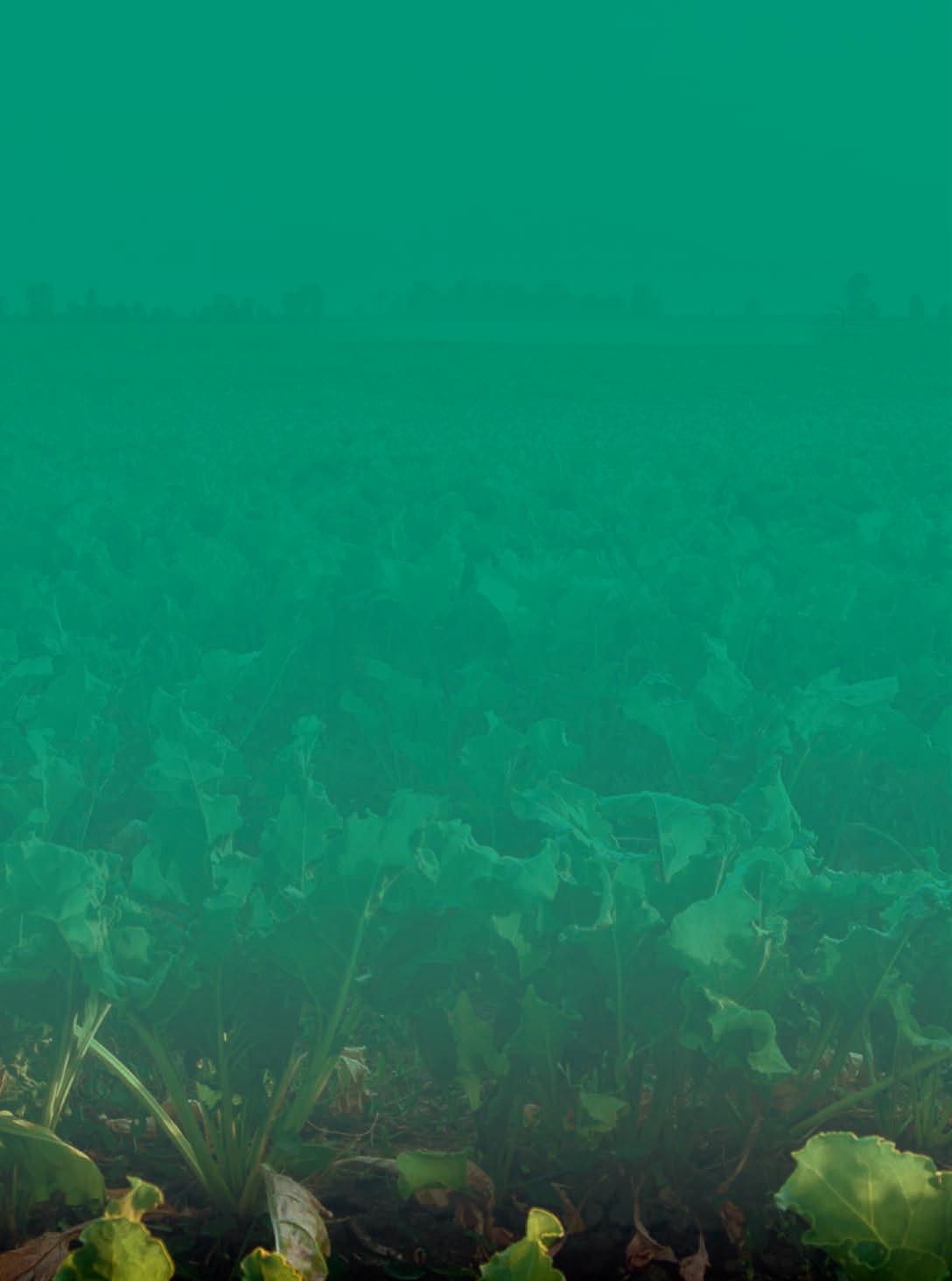
•Farm &Agribusiness Loans











































































































































•Insurance(MPCI, Hail, Prevent Plant)







































•Succession &Retirement Planning


•Farm Accounting &Tax Planning

We areacooperativeprovidingcustomized financingandfinancialservices forfarmers, ranchersandagribusinesses: Ag































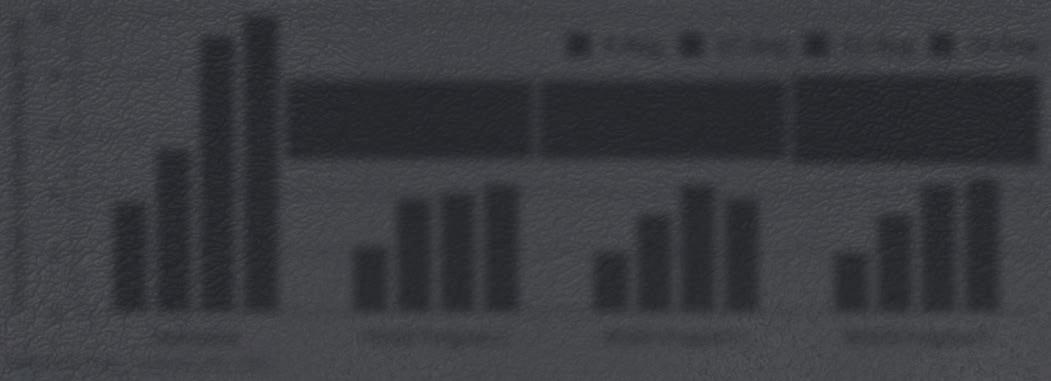






























…andthose2021trial resultsalsoindicatethat regev boosts extractable sucrose content whileprotectingsugarbeetsfromCercosporaleafspot.


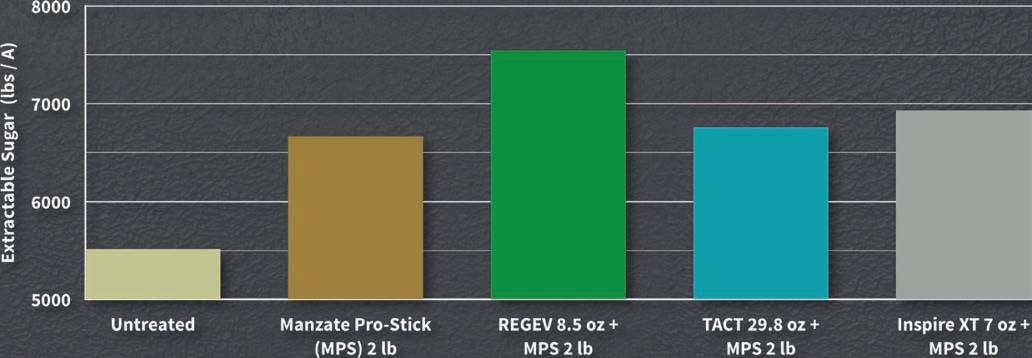

regev isthefirsthybrid fungicide to unitethediseasecontrol powerof botanical and conventional chemistries. This innovative combination of teatreeoil anddifenoconazolemeansthat regev providessugar beetgrowers with eightpowerfulmechanismsofactivity foreffective controlofCercosporaleafspotandpowder ymildew, whileenhancing growth,yieldand resistancemanagement.

Learnmoreat summitagro-usa.com
regevfungicideissoldexclusively throughhelena agri-enterprises andtenkoz member companies







WEDNESDAY, MARCH 16:
9 a.m. Doors open
10 a.m. Luther Markwart, executive vice president of the American Sugarbeet Growers Association
2 p.m. Rob Johansson, director of economics and policy analysis for the American Sugar Alliance
5 p.m. Doors close
THURSDAY, MARCH 17:
9 a.m. Doors open
10 a.m. Luther Markwart, executive vice president of the American Sugarbeet Growers Association
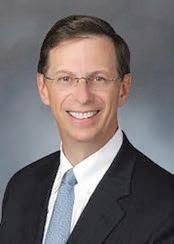
2 p.m. Rob Johansson, director of economics and policy analysis for the American Sugar Alliance

3 p.m. Doors close
Kyle Aasand, Maureen Abol, Cody Bakker, Wayne Formo, Craig Halfmann, Duane Hanson, Joe Hastings, Mohamed Khan, Katelyn Landeis, Michael Lundberg, Mike Metzger, Randy Nelson, Thomas Peters, Theodore Peterson, Nick Revier, Jason Schatzke, Jenny Schlecht, Kirsten Stibbe, Kevin Thorsness and Harrison Weber.

Luther Markwart has been the executive vice president of the American Sugarbeet Growers Association since 1982, serving all sugarbeet growers in the U.S. Markwart was raised on a dairy farm in eastern Michigan where his family had grown sugarbeets since 1933. He grew beets himself as a 4-H project. After graduating from Michigan State University, Markwart began serving the sugarbeet industry. In addition to his current role, he has served as the executive vice president of the Farmers and Manufacturers Beet Sugar Association in Michigan, as an advisor to federal agencies that have impacts on the domestic sugar industry and trade, chairman of the American Sugar Alliance for seven terms, co-chairman of the Sugar Industry Biotechnology Council for 18 years, a member of the Agriculture CEO Council since 2018, president of the Commodity Club of Washington, D.C., in 1996-97, president of the New York “Sugar Club” in 2005-06 and as a contributor to sugarbeet trade magazines. Markwart lives in McLean, Virginia, with his wife, Terri, and three children, Christian, Lauren and Megan.
Dr. Rob Johansson serves as the director of economics and policy analysis for the American Sugar Alliance, the national coalition of sugarbeet and sugarcane growers, processors, and refiners. He received a bachelor’s degree in economics from Northwestern University. He served in the U.S. Peace Corps before returning to Minnesota in 1995, where he received his doctorate in agricultural and applied economics from the University of Minnesota in 2000.
Johansson has held positions at the Office of Management and Budget, the Congressional Budget Office and the White House Council of Economic Advisers. He served as chief economist for the U.S. Department of Agriculture, where he was responsible for agricultural forecasts and advised the secretary of agriculture on programs, regulations and legislative proposals. At USDA, he also was chairman of the Federal Crop Insurance Corporation Board of Directors and was responsible for setting up the Farm Production and Conservation mission area. At the American Sugar Alliance, Johansson analyzes sugar supply and demand fundamentals, domestic and foreign sugar and agricultural policies, including Farm Bill topics and international trade negotiations.
solutionssolutionssolutionssolutionssolutionssolutionssolutionssoluti solutions dynamicchainmanagement solutionssolutionssolutionssoluti solutionssolutions active heightcontrol solutionssolutionssolutionssoluti solutions high profilechain solutionssolutionssolutionssolutionssoluti solutionssolutions active depthcontrol solutionssolutionssolutionssoluti solutionssolutions rockstruts solutionssolutionssolutionssolutionssoluti solutionssolutions grower focused solutionssolutionssolutionssolutions solutionssolutions solutions field-provensolutions solutions soluti ons solutionssolutionssolutionssolutionssolutionssolutionssoluti solutionssolutionssolutionssolutionssolutionssolutionssolutionssoluti solutionssolutionssolutionssolutionssolutionssolutionssolutionssoluti solutionssolutionssolutionssolutionssolutionssolutionssolutionssoluti solutionssolutionssolutionssolutionssolutionssolutionssolutionssoluti solutionssolutionssolutionssolutionssolutionssolutionssolutionssoluti solutionssolutionssolutionssolutionssolutionssolutionssolutionssoluti solutionssolutionssolutionssolutionssolutionssolutionssolutionssoluti solutionssolutionssolutionssolutionssolutionssolutionssolutionssoluti solutionssolutionssolutionssolutionssolutionssolutionssolutionssoluti solutionssolutionssolutionssolutionssolutionssolutionssolutionssoluti solutionssolutionssolutions 50seriesdefoliator solutionssolutionssoluti solutionssolutionssolutionssolutionssolutions innovation solutionssoluti solutionssolutionssolutions continuousimprovement solutionssoluti solutionssolutionssolutionssolutions amitytech.com solutionssoluti solutionssolutionssolutionssolutions dynamicchainmanagementsoluti solutionssolutionssolutionssolutions active heightcontrolsolutionssoluti ons
Adjusting yourdefoliatorduring harvest is challenging. Amity Technology brings you the solution with Adjusting your defoliator during harvest is challenging. Amity Technology brings you the solution with Active Height Control for your defoliator. Sensors measure the beet height and adjust your defoliator to your pre-set “adjustable from the cab” parameter. The result is automatic, on-the-go matching of flail height to changing field and crop dynamics for uncompromised defoliation.
In the United States, nearly half of all domestically produced sugar comes from sugarbeets and the other half comes from sugarcane. In December 2021, I had the exciting opportunity to travel to Louisiana as a guest of the Sugar Association to experience the sugarcane side of the American sugar industry for the first time.
In 2021, the Sugar Association hosted its first ever “Real Sugar: Farm-to-Table” tours to showcase the American sugar industry to prominent social media influencers. The Sugar Association, founded in 1943, is the scientific voice of the United States sugar industry focused on health and nutrition of the sugar we produce. The group represents both beet and cane sugar producers, and shares responsible scientific research about sugar.
The first farm-to-table sugarbeet tour took place on Sept. 28-30, 2021, in the Red River Valley region of Minnesota. On Dec. 13-14, 2021, eight social media diet, lifestyle and wellness influencers, including chefs, bloggers, dietitians and a neuroscientist, met in New Orleans for the sugarcane farm-to-table tour.

The two-day event, hosted by the Sugar Association, the American Sugar Cane League and the American Sugar Refining company, provided influencers a firsthand view of the sugarcane harvest in action. Attendees also toured the Lula-Westfield sugar factory and Domino Sugar’s Chalmette refinery, the largest sugar refinery in the western hemisphere.
“We brought influencers with expertise in food and nutrition to Louisiana and Minnesota because we thought they would appreciate seeing the process from the field to mills, factories and refineries,” said Dr. Courtney Gaine, President and CEO of the Sugar Association. “Nothing
can replace the experience of standing in the fields and riding in the harvesters. By connecting these guests with sugar, the plants, the process and the people, our hope is they feel more connected, more informed and more likely to carry that with them as they communicate with others.”
The tour in Louisiana kicked off with a bus ride to a sugarcane farm about an hour west of New Orleans. Attendees enjoyed shrimp po’boys, a traditional sandwich of Louisiana, while receiving an overview of sugarcane farming from Jim Simon, general manager of the ASCL and Charley Richard of C. Richard & Associates.
Louisiana, in its third century of production, is the oldest U.S. sugar producing area, according to Simon. Sugarcane first arrived in the state with Jesuit priests in 1751 and was initially planted where their church now stands on Baronne Street in New Orleans. By 1795, several plantations had been established on the outskirts of New Orleans, and sugar was first granulated on a commercial scale in Audubon Park in 1795 by Etienne de Boré.
“Today, sugarcane is the largest row crop in Louisiana, and our farmers and millers take pride in the crucial role we play in providing a safe and reliable supply of sugar for America’s families,” Simon said. “Having the opportunity to introduce consumers to our farmers through events like this is one of the more rewarding aspects of my work. We hope efforts like this tour provide consumers with a better understanding of the significant resources and effort needed to provide sugar for our country.”
The sugar industry is vital to the state’s economy with an annual farm gate of $1 billion to cane growers and raw sugar factories, while also generating an overall economic impact of $3 billion. Sugarcane

is produced on more than 500,000 acres of land in 22 Louisiana parishes with a production of approximately 16 million tons of cane yearly. About 17,000 jobs are supported in the production and processing of sugarcane, and the state has 11 raw sugar mills. The city of Alexandria is the northernmost part of the state where sugarcane can be commercially produced. All points north of Alexandria are unable to grow the crop due to increased likelihood of freeze.
“The highest land, which is always right next to the river or bayou, is where sugarcane is grown,” Richard said. “The further away you get from the river, the more clay the soil becomes and therefore harder to work with.”
During the bus ride, Richard explained that Louisianians don’t use standard directions such as north and south.
“We navigate according to the river and use terms like ‘riverside,’ ‘lakeside’ and ‘east bank,’” he said. “We don’t use a compass because the river has so many twists and turns.”
After traveling “upriver,” the bus arrived on the “west bank” at a sugarcane field being harvested by fifth generation farmer Stephen Simoneaux, 36, and his father Rodney. The Simoneauxs own and operate U&R Farms in Plattenville. Influencers were able to ride with Stephen in his combine-type sugarcane harvester and see the crop up close. However, the group was warned not to get up close and personal with the red fire ants that reside in large mounds in sugarcane fields. Despite their nasty bite, the ants are welcome residents. They are one of the most efficient predators of the main pest of sugarcane, the sugarcane borer, and are considered an effective biological control strategy.
CONTINUED ON PAGE 18
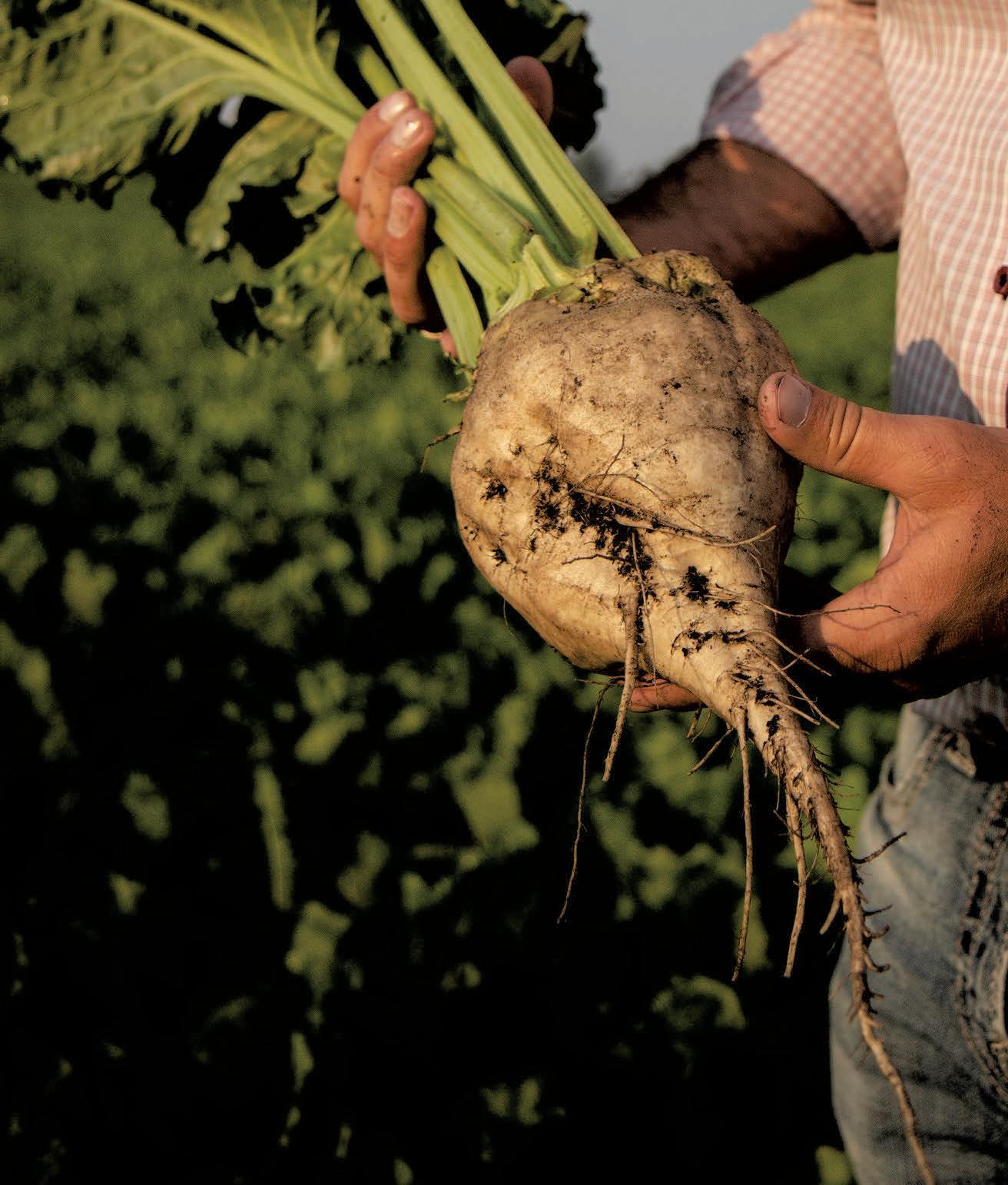

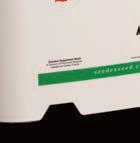




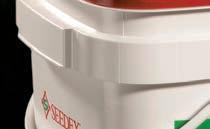






The Simoneauxs were nearing the end of their harvest, which began in September and was Stephen’s 12th full-time harvest season. Unlike sugarbeets, sugarcane is planted in rows in the fall using whole stalks of cane rather than true seed. There are seven to ten sugarcane varieties available to growers, and most growers plant three varieties. After its initial planting, sugarcane is a perennial grass that is harvested for about four years before being replanted. Each stalk is made up of several joints and each joint has a bud. The buds produce shoots of cane the following spring after being planted. After maturing into stalks during the late summer, the first cane crop harvested in the fall is called the “plant cane crop.” Each subsequent harvest is called a “ratoon.” In Louisiana, two to four ratoon crops are harvested before the land must be fallowed and replanted.
The 2021 sugarcane harvest wrapped up successfully, according to Stephen Simoneaux.
“For our area, and to the south and east, tonnage was well below our 10-year average. This was due mainly to the excessive amount of rainfall we caught in spring and summer,” he said. “We received close to 90 inches of rain for the year and that’s with a dry fall and winter. Then we caught a direct hit from Hurricane Ida in the grand growth stage, which didn’t help.”
Despite the challenges, harvest is Stephen’s favorite part of sugarcane farming.
“You see the product of the hard work you put in all year long. We cannot control Mother Nature, as we saw firsthand in 2021, but in farming you take the good with the bad,” he said. “It’s great to have visitors come to our area and operation and see that we are family farms. Almost all farms here are multiple generations working together to produce the safest, most sustainable product we can.
Without our greatest asset, the land, we have no livelihood. We are truly just trying to make life a little bit sweeter.”
After visiting the sugarcane field, influencers toured the Lula-Westfield mill in Belle Rose. The mill was built in the late 1800s and was purchased by the Savoie family in the 1920s. Stephen Savoie is the sixth generation of his family to be in the milling business. He started off as an engineer at the factory and is currently CEO of Lula-Westfield, LLC.
“Like farming, milling in Louisiana is a family business for many generations of people and we also have multigeneration employees here at the factory,” Savoie said. “Lula factory receives sugarcane from three neighboring parishes and has a grinding capacity of 12,000 tons per day. Cane is a perishable crop and once harvested, it needs to be delivered to the factory and processed within 18 hours.”
After sugar is extracted from the cane at the mills, it is stored in warehouses until sold to refineries like American Sugar Refining (Domino) in Chalmette. At the refinery, the raw sugar crystals are melted to remove the remaining impurities and produce white sugar. Chalmette, established in 1901, has 420 employees and refines 7.5 million pounds of raw sugar each day.
The Louisiana farm-to-table tour dispelled a few myths about sugar for Andrea Mathis, a registered dietitian and food blogger from Birmingham, Alabama.
“I’ve been on a few farm tours before and each one is such a unique and informative experience,” said Mathis, creator of the blog “Beautiful Eats and Things.” “I loved the sugarcane tour because it showcased the entire sugar-making process. It also dispelled the myth about chemicals being added during the refining process and
showed that this is not true. I was excited to share that information with my followers.”
Mathis, a mom of two who is passionate about nutrition, became a dietitian and blogger to help others get credible nutrition information from credible nutrition experts.
“I constantly receive questions about fad diets and the latest health trends on social media. Most people think that being ‘healthy’ has a certain look, but that couldn’t be further from the truth,” she said. “Someone’s complete health status cannot be determined just by looking at their outward appearance. My nutrition philosophy is centered around making attainable, healthful lifestyle changes without restriction. This can be done by incorporating more plant-based meals, enrolling in a fun workout class and drinking more water.”
Mathis hopes her blog shows people that healthier eating can be easy, practical and delicious.
“I want to dispel the myth that you can’t enjoy things such as pizza, hamburgers and sugar when trying to live a healthier lifestyle,” she said. “The truth is that all foods can fit into any lifestyle. It’s all about moderation and listening to your body’s hunger cues.”
No matter where we go, food is a uniting factor that brings people together.
“Folks from Louisiana love to talk about food and that’s one of the reasons we were so happy to host the Sugar Association and the influencers who showcase food and nutrition on their platforms,” said Sam Irwin, public relations director of the American Sugar Cane League. “The farm-to-table sugar making experience in the Bayou State is truly unique and we think our visitors got a real taste of Louisiana.”
Laura is a shareholder in American Crystal Sugar Company and a member of the Red River Valley Sugarbeet Growers Association, the World Association of Beet and Cane Growers, and the American Society of Sugarbeet Technologists. She is also on the Board of Directors of the Sugar Industry Biotechnology Council. Laura can be reached at GoSugar.LR@gmail.com.




Harvestisn’t alwayseasy. It’saprocess that requirespassiontopersevere At SESVanderHave, we’re continuously workingtodevelopsugarbeetvarieties thatthrivedespitethepressuresfrom diseaseandthechallengesofnature sothat youcanendeachharveston ahigh-note.Becausesharingthe prideofsuccessstartswithsharing thepassiontoachieve it.





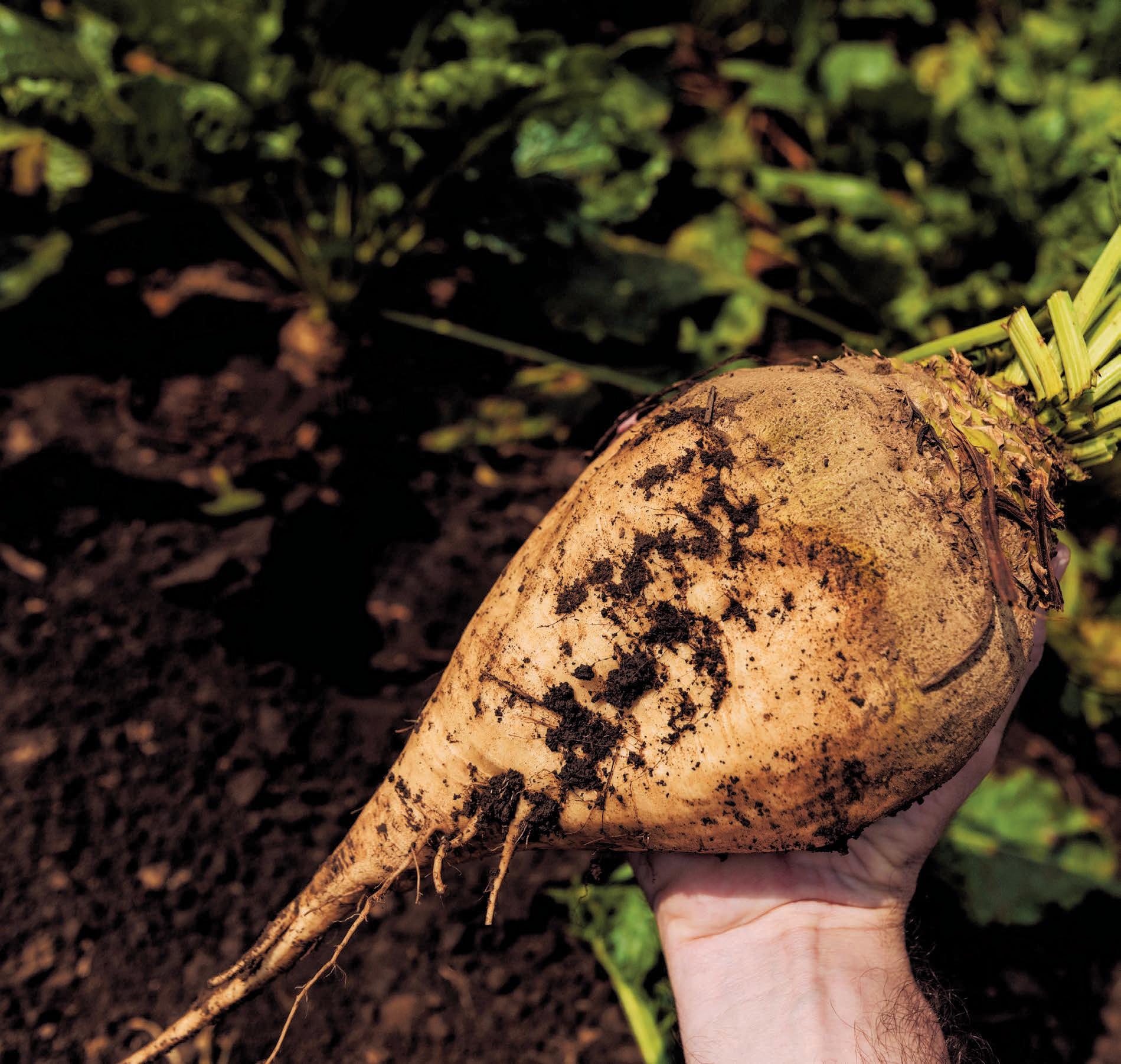

1: It is very fitting that Henry and Marjorie Laevens had a photo celebrating their 50th wedding anniversary taken with their family in their sugarbeet field near Chatham, Ontario. This picture, photographed by Jackie Doyle, captured 3 generations of sugarbeet farmers. Photo submitted by Marcia Vermey. Contributed / Jackie Doyle

2: Sugarbeet harvest 2021 at Bruce Nelson Farms near Barnesville, Minnesota. Contributed / Amanda Nelson


3: At the Vance Lungren Sr. farm south of Worland Wyoming, Vance’s son Clint and grandson Tristen operate diggers. Contributed / Vance Lungren Sr.
4: The sky was on fire above this semi while sitting at the Little Valley Beet Dump in Bruneau, Idaho. One of the greatest gifts of driving truck during beet harvest is watching the sun rise and set. Contributed / Beth Gasper

Not many industries pass through families the way farming does, and you can see that in these photos submitted by readers of Sugarbeet Grower Magazine.

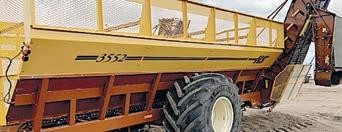
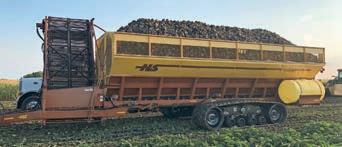
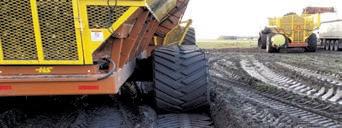



If you have a photo related to the sugarbeet industry you want to share, send it to jschlecht@agweek.com, with the subject line “Photos from the Field.” Make sure to include a brief description, including the names of anyone in the photo, where it was taken, what was happening, and the name of the photographer.





Thepowerfulbr oad-spe ctrumdi se as e controlofInspir e ® XT fungicide standsoutfromallothers.Bycombiningtwosuperior triazolefungicides,sugarbeetgrowerscandependonitfor long-lastingcontrolofCercosporaleafspot,powderymildewand otherdamagingdiseases.Provenacrosstheworld,itstopsdisease initstracks.Forpowerand reliability, there’s nobetterchoicethan “topoftheclass”Inspire XT.


Growersspend agreatdeal oftimelookingtothefuture. Whetherpreparingforharvest, managingforweatherorsetting rotations,constantimprovement isthegoal. Yetitisintherare momentswhenweglanceback thatourperspectivecanshift. Thebigpicturesuddenlysnaps intofocus—thelifeyou’vebuilt andthelegacythatwillpassto thosewhocomebehindyou.
Throughalltheseasonsand acrossgenerations,Crystalbrand beetseedhasbeentherebeside you. We’vesharedinthejourney byofferingsolutionsthatpush yieldshigherwhilemanagingpests anddisease.It’sapartnership thatisfocusedoninnovatingand adaptingforthefuture,evenaswe occasionallypausetoappreciate thepresent.



Cr ystalbrandis aregisteredtrademarkofAmerican Cr ystalSugar Companyandisusedwithpermission
